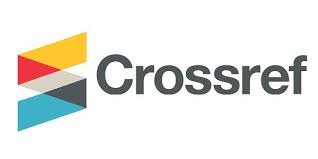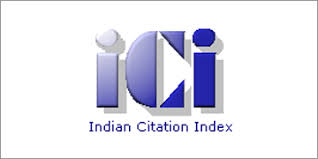IJCRR - 8(19), October, 2016
Pages: 21-24
Print Article
Download XML Download PDF
TREATMENT OF SPECIAL CHILDREN: AN ORTHODONTIC PERSPECTIVE
Author: Shyama Dash1, Uday N. Soni, Rahul S. Baldawa, N. G. Toshniwal, Shubhangi A. Mani
Category: Healthcare
Abstract:Orthodontic care may seem out of reach for many children with special needs due to physical and developmental disabilities. Orthodontists who lack education and experience to work with such patients with disabilities end up denying treatment of these patients, as a result, patients and parents become frustrated.Orthodontic treatment is an elective procedure for essentially all patients, including those with medical problems. Correction of disfiguring dental and facial problems contributes in an important way to an individual's self-esteem. The positive benefits of orthodontic treatment influence social integration and interaction, and can lead to significant improvement in overall well-being.
Keywords: Special children, Special needs, Orthodontics
Full Text:
INTRODUCTION
As a result of tremendous progress made in the fields of medicine and dentistry in the 20th century, a remarkable improvement in the survival rates, longevity and quality of life of children affected by congenital, developmental or pathologic conditions is continually occurring. Coupled with elevations in public awareness, changing social policies and opinion, and favorable legislation, higher standards of non-institutionalized medical and dental care are becoming routinely available to these individuals. In the present scenario, the practicing clinician in the community responsible for addressing the needs of these special patients has to be accessible to them, and competent and willing to provide them the required optimal level of care. Orthodontic treatment is an elective procedure for essentially all patients, including those with medical problems. Correction of disfiguring dental and facial problems contributes in an important way to an individual’s self-esteem. The positive benefits of orthodontic treatment influence social integration and interaction, and can lead to significant improvement in overall well-being (1, 2). However, there are important considerations while planning and rendering orthodontic care to children with special needs. The goal of this review is to discuss the indications and implications of orthodontic therapy for children in some of these special situations.
MENTAL RETARDATION
Mental retardation is defined as a significant decrease in the intellectual ability with consequent limited ability to adapt to the environment. The degree of retardation varies among individuals, ranging from mild to severe, and often occurs along with other systemic problems. Mental retardation is frequently associated with a greater occurrence of malocclusion.
Orthodontic Care
- Orthodontic treatment can provide significant esthetic and functional benefits to affected individuals. The orthodontic treatment plan for a mentally challenged patient should be individualized and developed keeping the child’s strengths and weaknesses in sight.
- Short appointments should be planned
- The clinician should ensure that a good level of communication is established with the child, and that all explanations and instructions are simple and well understood by the patient.
DOWN’S SYNDROME
Down's syndrome (3-8), is a genetic disorder caused by trisomy of chromosome 21, which is an autosomal chromosome. This syndrome is associated with physical growth delays, typical facial features, and mild to moderate intellectual disability. In some conditions, such as Down syndrome, a generalized retardation of growth and development is often found.
Clinical Manifestation
- Eruption of both deciduous and permanent teeth is frequently delayed, and there is also a delay in the exfoliation of the deciduous teeth.
- Pseudoprognathism decreased lower facial height, small midface, perioral hypotonia, a large and protruded tongue, crossbite, anterior open bite, and crowding are common associated craniofacial features.
- Additionally, children with Down syndrome have an increased susceptibility to rapid, destructive periodontal disease due to both local and systemic factors.
- These children are also more prone to suffer from cardiac defects, leukemia’s and respiratory infections.
- Children with Down syndrome are frequently the victims of a stereotype image that has come to be associated with their mental condition even though their mental retardation is usually of a mild or moderate nature, and these children often have a wide range of comprehensive and performance capabilities.
Orthodontic Care
- The orthodontist should be careful to assess the potential of each child individually and structure treatment strategies accordingly.
- The extent to which orthodontic appliance therapy can be successfully instituted varies with the cooperative abilities of the patient, but a good orthodontic treatment result is certainly achievable for many patients.
- In the more severely mentally retarded patients, the initial placement of limited fixed appliances or bonded/cemented bite planes can be accomplished under general anesthesia. Surgical orthodontic treatment is an important consideration in this in group of patients.
CEREBRAL PALSY
Cerebral palsy (9-10) is a collection of disabling conditions due to permanent brain damage in the prenatal and perinatal period. One newborn in approximately 200 live births is afflicted with this condition.
Clinical Manifestations
- Cerebral palsy is characterized by variable severities of muscle weakness, stiffness or paralysis, poor balance, irregular gait, and uncoordinated, involuntary movements.
- Mental retardation, seizures, strabismus and speech problems may accompany the neurological problems.
- A wide range of neuromuscular dysfunction is seen, which presents as spasticity, dyskinesia, ataxia or a mixture of these.
- These children also may suffer from abnormalities of the cervical spine.
Oral Manifestations
- They lack intraoral, perioral and masticatory muscle coordination and have limited control of the neck muscles, which contributes to the risk of head roll in the supine position.
- Children with cerebral palsy often have severe attrition due to bruxism, and a higher frequency of periodontal disease and gingival hyperplasia that is related to both local factors and anticonvulsant therapy.
- They frequently have a marked overjet, open bite, posterior cross bite, and are more susceptible to trauma to the anterior maxilla, thus implicating the need for orthodontic treatment.
Orthodontic Care
- Depending on the severity of neuromuscular dysfunction, specific goal-oriented orthodontic treatment, often in conjunction with orthognathic surgery to correct the large overjet and open bite can be undertaken for them.
- Care should be taken to stabilize the patient’s head and to avoid a completely supine position in the dental chair during treatment.
- In general, for patients with a known history of seizures, orthodontic treatment can be carried out safely when the disease is under good medical control and there is no active seizure activity in the recent history of the disease.
- Gingival surgery for reducing the hyperplasia may be required to facilitate orthodontic treatment.
Cystic Fibrosis
Cystic fibrosis(11-14) has an occurrence of one in 2,000 births, is the most common lethal genetic disorder in Caucasians. Children with cystic fibrosis have progressive obstructive lung disease and are at a high risk of infection. Antibiotic administration is the mainstay of therapy for the treatment of cystic fibrosis. New and potent antibiotics, more aggressive antibiotic treatment and multiple routes of administration have contributed to improved survival among cystic fibrosis patients.
Oral Manifestations
- Oral implications associated with cystic fibrosis include enamel hypoplasia and tooth discoloration
- Salivary gland dysfunction
- Reduced levels of dental plaque, caries and oral disease.
These are also related to the effects of antibiotics in these patients. Cystic fibrosis patients are always at a high risk of developing lethal lung infection(15), and the mouth may act as a reservoir for potentially pathogenic respiratory bacteria. They have deficient salivary secretion, and are at a greater risk of decalcification around fixed orthodontic appliance attachments. When undertaking orthodontic treatment, precautions should be taken to avoid the possibility of the patient aspirating infective material. (16)
Orthodontic Care
- For this reason, and also to avoid restricting their already diminished lung volume, these children should be treated in a more upright rather than fully reclined position.
- However, since longevity in affected children varies widely among individual patients, an evaluation by the patient’s physician of the severity of the problem and life expectancy should be included while planning possible orthodontic treatment.
Juvenile Rheumatoid Arthritis (17)
It is an inflammatory condition of the joints, probably of autoimmune origin, in which the inflamed and hyperplastic synovial membrane encroaches on the articulating joint surfaces and leads to the destruction of the articular cartilage and underlying bone if left untreated.
It is the major arthritic problem in children and young adults, and is extremely variable in onset, severity and clinical course. The proliferative arthritis involving multiple joints may frequently affect the temporomandibular joint in children, either unilaterally or bilaterally. It may be self-limiting with satisfactory recovery in many cases, or may, in severely affected patients, progress to irreversible damage to the joint spaces, leading to significant functional disability.
Clinical Manifestations
- The patient may have varying degrees of mandibular retrognathia(24,25) with a steep mandibular plane, anterior open bite(18), mandibular asymmetry in patients with unilateral involvement, and signs and symptoms of temporomandibular joint dysfunction.
- These may include difficulty in wide mouth opening, pain on mandibular movements and joint sounds.
- Erosion of the cortical outline in the TMJ is the most common radiographic finding, followed by flattening with or without erosion, and the complete loss of the condylar head in the very severely affected patients.
- A multidisciplinary approach is usually required for the management of various componentsof juvenile rheumatoid arthritis.(19-21)
- Medical treatment involves steroidal and non-steroidal anti-inflammatory agents, while gold salts, d penicillamine and cytotoxic drugs may be required for select patients. Temporomandibular therapy is aimed at reducing pain and dysfunction in the masticatory system, restoring and maintaining mandibular mobility to correct and prevent occlusion problems and deformities, and at stimulating mandibular growth.(22,23)
- Therapeutic exercises against resistance and chewing training are beneficial to increase muscle strength andmandibular mobility. Occlusal splints or passive activators may be helpful to decrease the load on the TMJ and reduce masticatory muscle tension.
Orthodontic Care
- Children with juvenile rheumatoid arthritis should have annual orthodontic examinations, which should include a functional evaluation of the masticatory system, and radiographic studies of the face and the temporomandibular joints.
- Orthodontic treatment in patients with juvenile rheumatoid arthritis should be attempted only when the disease is under control. It must be remembered that stress on the joint during orthodontic treatment may result in further degeneration of the condyle.
- Functional appliances with large mandibular propulsions, heavy intermaxillary elastics and orthognathic surgery involving large mandibular advancements can lead to increased joint stress.
- Therefore, in the more severely retrognathic patients, surgical orthodontic treatment options involving maxillary surgery and genioplasty should be considered when possible.
Discussion
Children with special needs are refrained from having normal activities because of any physical or mental disability. They require special orthodontic attention due to increased prevalence and severity of malocclusion.In order to deal with such patients the most important quality an orthodontist must have is “communication skill”. Good soft skills can help convincing the parents as well as patients to undergo treatment. Before starting such cases it is always advisable to take advice from the patients’ physician. This will help us for being more cautious while framing the treatment plan. The orthodontist should be careful to assess the potential of each child individually and structure treatment strategies accordingly. The extent to which orthodontic appliance therapy can be successfully instituted varies with the cooperative abilities of the patient, but a good orthodontic treatment result is certainly achievable for many patients .most of these patients present with poor oral hygiene and they should be educated for the same.
Conclusion
These patients had these disabilities by chance not by choice, so we as clinicians must not differentiate them from our normal patients. Rather we should make efforts to help them to establish their self –esteem and giving them a better quality of life.
Conflict of interest: None
Source of funding: None
References:
- Uday N. Soni et al. “Patient’s expectations of orthodontic treatment at first visit”. Indian Journal of Orthodontics and Dentofacial Research, April–June 2016; 2(2):39-42.
- UN Soni et al. “Knowledge and awareness of malocclusion among rural population in India” Asian Pac. J. Health Sci., 2014; 1(4): 329-334
- Patterson, D (Jul 2009). "Molecular genetic analysis of Down syndrome." Human Genetics 126 (1): 195–214.
- Weijerman, ME; de Winter, JP (Dec 2010). "Clinical practice. The care of children with Down syndrome.". European journal of pediatrics 169 (12): 1445–52.
- Cohen MM, Winner RA. Dental and facial characteristics in Down syndrome. J Dent Res. 1965; 44:197–208.
- Townsend GC. Tooth size in children and young adults with trisomy 21 (Down syndrome). Arch Oral Biol. 1983; 28:159– 166.
- Peretz B et al. Modification of tooth size and shape in Down’s syndrome. J Anat. 1996; 188: 167–172.
- Peretz B et al, Modified cuspal relationship of mandibular molar teeth in children with Down’s syndrome. J Anat. 1998; 193:529–533.
- Oskoui, M et al, "An update on the prevalence of cerebral palsy: a systematic review and meta-analysis."Developmental medicine and child neurology (June 2013). 55 (6): 509–19.
- Nieuwenhuijsen et al.; Transition Research Group South West Netherlands "Experienced problems of young adults with cerebral palsy: targets for rehabilitation care". Archives of Physical Medicine and Rehabilitation (2009);90 (11): 1891–1897.
- Anderson DH: Cystic fibrosis of the pancreas and its relation to celiac disease clinical and pathological study. Am J Dis Child 56:344-99, 1938.
- Blacharsh C: Dental aspects of patients with cystic fibrosis: a preliminary clinical study. J Am Dent Assoc 95:106-110, 1977.
- Boat TF et al: Cystic fibrosis, in The Metabolic Basis of Inherited Disease, 6th ed. Scriver CR et al., eds. McGraw Hill: New York, 1989, pp 2649-80.
- Cystic fibrosis: a current review: The American Academy of Pediatric Dentistry April/May, 1990 - Volume 12, 71-78.
- Cheng PW et al: Increased sulfation of glycoconjugates by cultured nasal epithelial cells from patients with cystic fibrosis. J Clin Invest 84:68-72, 1989.
- DiSant’Agnese PA, Davis PB: Research in cystic fibrosis. N Engl J Med 295:481-85; 534-41; 597-602, 1976.
- David L. Turpin ;Juvenile rheumatoid arthritis: a 14-year posttreatment evaluation The Angle Orthodontist Sep 1989, Vol. 59, No. 3 pp. 233-238.
- Bertha Barriga et al : An Investigation of the Dental Occlusion in Children with Juvenile Rheumatoid Arthritis;The Angle Orthodontist Oct 1974, Vol. 44, No. 4 pp. 329-335
- Grokoest AW et al. Some aspects of juvenile rheumatoid arthritis. Bull Rheum Dis. 1957; 8: 147–148. 13.
- Schaller J, Wedgwood RJ. Juvenile rheumatoid arthritis: a review. Pediatrics. 1972; 50:940–953.
- Cassidy JT, Martel W. Juvenile rheumatoid arthritis: clinicoradiologic correlations. Arthritis Rheum. 1977; 20(2 suppl):207–211.
- Twilt M et al. Facioskeletal changes in children with juvenile idiopathic arthritis. Ann Rheum Dis. 2006; 65:823–825.
- Kjellberg H et al. Craniofacial structure in children with juvenile chronic arthritis (JCA) compared with healthy children with ideal or postnormal occlusion. Am J OrthodentofacialOrthop. 1995; 107:67–78.
- Stabrun AE et al. Reduced mandibular dimensions and asymmetry in juvenile rheumatoid arthritis. Pathogenetic factors. Arthritis Rheum. 1988; 31:602–611.
- Stabrun AE. Impaired mandibular growth and micrognathic development in children with juvenile rheumatoid arthritis. A longitudinal study of lateral cephalographs. Eur J Orthod. 1991; 13:423–434.
|






 This work is licensed under a Creative Commons Attribution-NonCommercial 4.0 International License
This work is licensed under a Creative Commons Attribution-NonCommercial 4.0 International License